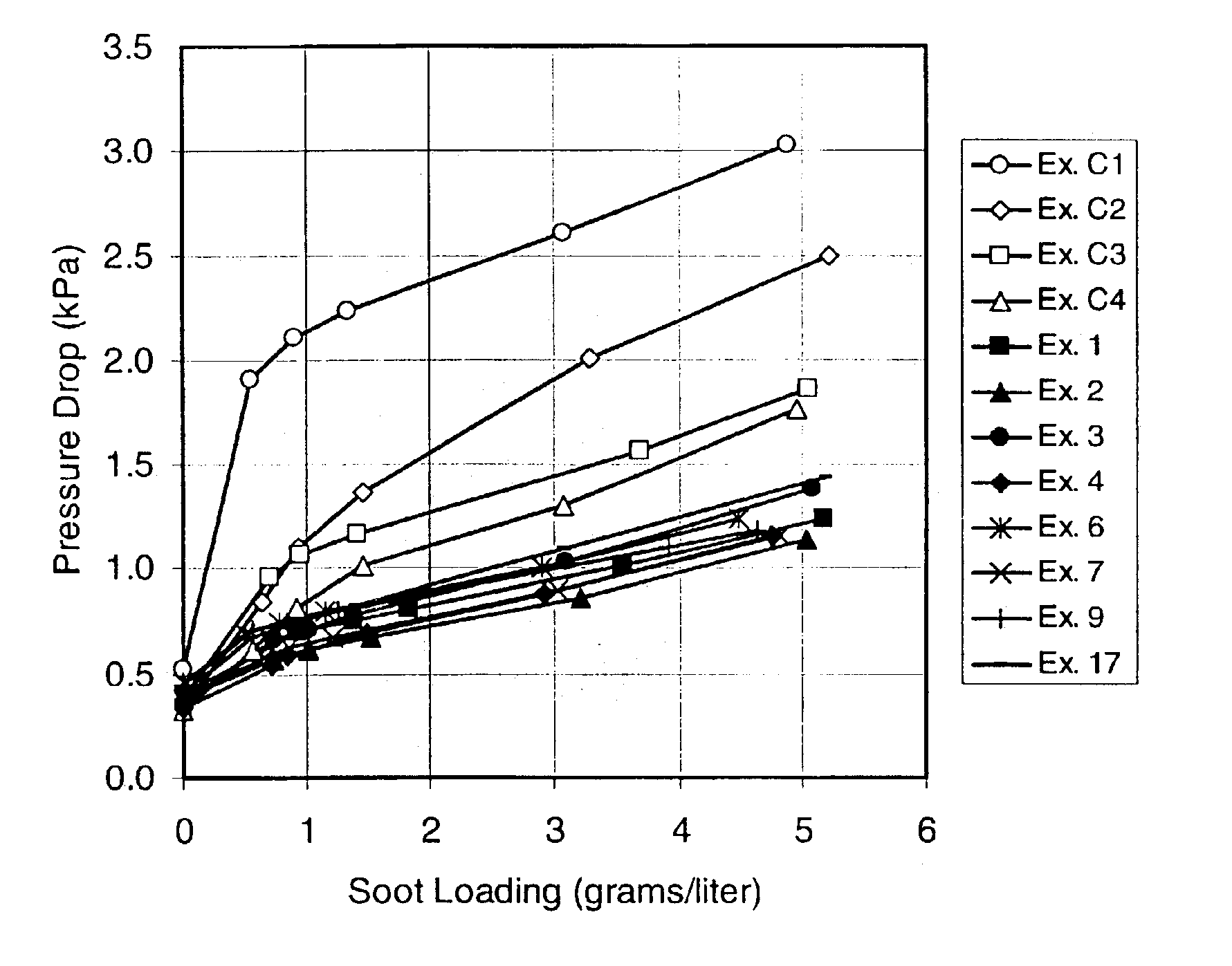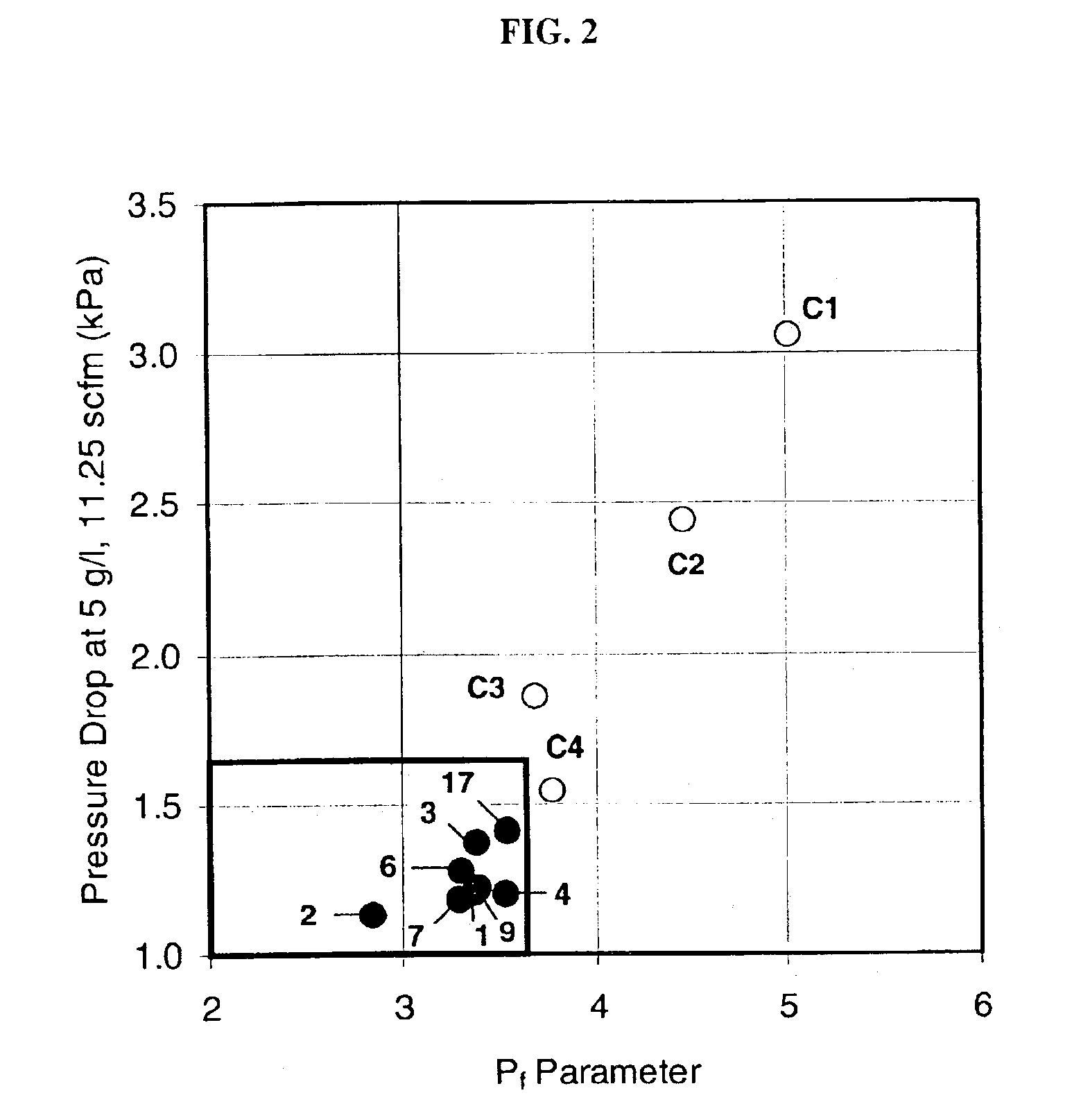Cordierite ceramic body and method
a ceramic body and cordierite technology, applied in the field of cordierite bodies, can solve the problems of high pressure drop, high strength, and very low pressure drop of carbon soot, and achieve the effects of low strength, high filtration efficiency and low pressure drop
- Summary
- Abstract
- Description
- Claims
- Application Information
AI Technical Summary
Benefits of technology
Problems solved by technology
Method used
Image
Examples
examples
[0038]Inventive and comparative examples were prepared by mixing together selected raw materials from Table 1 in the proportions listed for the examples in Tables 2, 3, 4 and 5. 100 parts by weight of the dry ingredients (oxides plus pore formers) were mixed with about 4 to 6 parts by weight methyl cellulose and 1 part by weight sodium stearate. The contents were then plasticized with about 25 to 40 parts by weight deionized water and extruded into honeycomb having a nominal cell density of 200 cells / inch2 and a wall thickness of 0.012 inches. The honeycombs were dried and subsequently fired to a temperature of 1405 to 1415° C., held at that temperature for 11 or 25 hours, respectively, and then cooled to room temperature.
[0039]Comparative (non-inventive) examples and properties measured thereon are provided in Table 2. Inventive examples and respective properties are provided in Tables 3 to 5. Pore volume, % porosity, and pore size distribution were measured by mercury porosimetry....
PUM
| Property | Measurement | Unit |
|---|---|---|
| specific surface area | aaaaa | aaaaa |
| median particle diameter | aaaaa | aaaaa |
| porosity | aaaaa | aaaaa |
Abstract
Description
Claims
Application Information
 Login to View More
Login to View More - R&D
- Intellectual Property
- Life Sciences
- Materials
- Tech Scout
- Unparalleled Data Quality
- Higher Quality Content
- 60% Fewer Hallucinations
Browse by: Latest US Patents, China's latest patents, Technical Efficacy Thesaurus, Application Domain, Technology Topic, Popular Technical Reports.
© 2025 PatSnap. All rights reserved.Legal|Privacy policy|Modern Slavery Act Transparency Statement|Sitemap|About US| Contact US: help@patsnap.com



